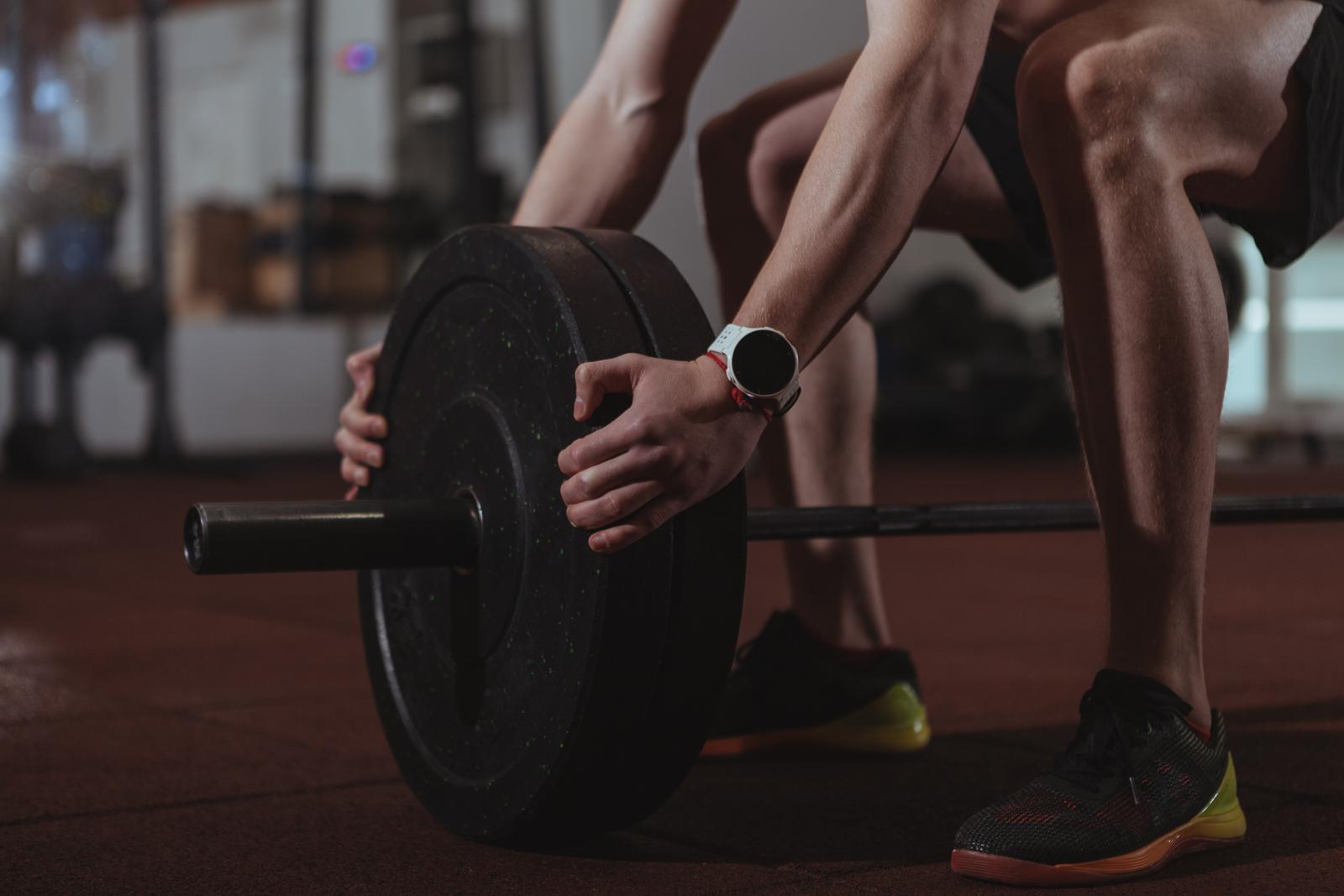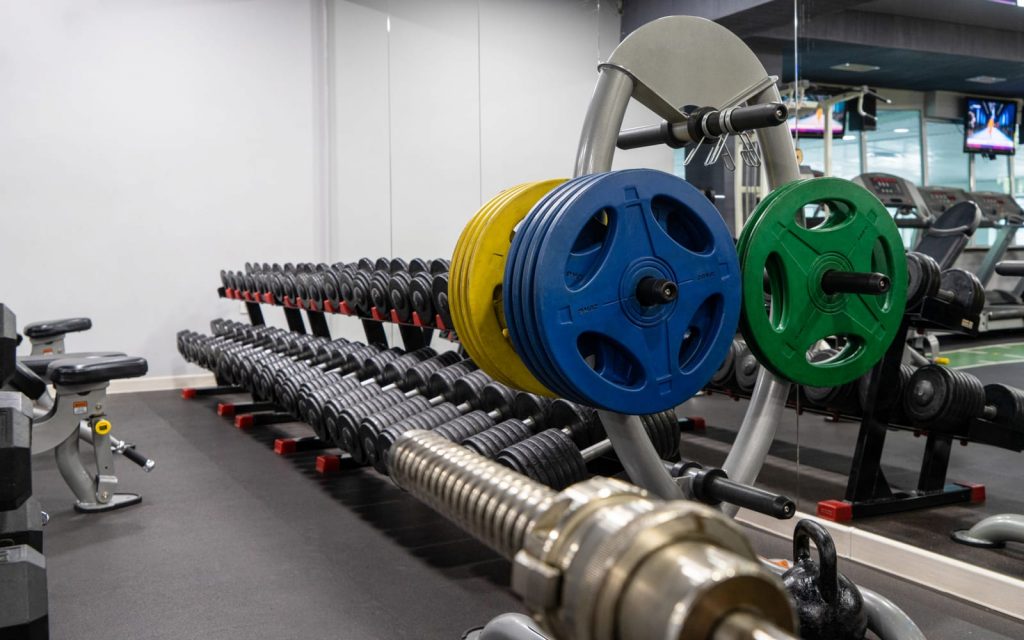
Exploring Various Weight Plates and Their Best Uses
Did you know that weight plates are not just for bodybuilders? These essential pieces of gym equipment are used in a variety of strength training exercises to build muscle and increase strength. But here’s the surprising part: weight plates come in different sizes and materials, each serving a specific purpose.
Whether you’re a seasoned lifter or just starting your fitness journey, understanding the different types of weight plates is crucial. From bumper weight plates designed for Olympic lifts to technique plates perfecting your form, there’s a weight plate for every need. And let’s not forget about competition plates that meet strict standards with their stated weight accuracy.
Types of Weight Plates
If you’re getting into weightlifting, it’s important to know about the different types and uses of weight plates. Let’s dive in and explore the various options available.
Standard Weight Plates
Standard weight plates are the most common type you’ll find in most gyms. These plates have a 1-inch hole diameter, making them compatible with standard barbells. They come in various weights, ranging from 2.5 pounds to 45 pounds (and sometimes even higher). Standard weight plates are great for beginners or those who prefer lighter weights.
Olympic Weight Plates
On the other hand, if you’re serious about weightlifting and want to take your training to the next level, Olympic weight plates are what you need. These plates have a larger 2-inch hole diameter and are designed specifically for Olympic barbells. They come in heavier weights than standard plates and offer greater stability during intense lifting sessions.
Bumper Plates
If you’re into Olympic lifting or CrossFit, bumper plates should be on your radar. These specialized weight plates are made of rubber and provide cushioning when dropped from overhead lifts like snatches and clean & jerks. Bumper plates help protect both the equipment and the floor while allowing athletes to focus on their technique without worrying about damaging anything.
Understanding the different types of weight plates can help you choose the right ones for your fitness goals. Whether you opt for standard weight plates for general strength training or invest in Olympic or bumper plates for more specific purposes, having a variety of options at your disposal will enhance your workout experience.
Uses and Applications of Weight Plates
Weight plates are incredibly versatile pieces of equipment that can be used in a variety of ways to enhance your workout routine. Whether you’re using them with barbells, dumbbells, or on their own, weight plates offer endless possibilities for building strength and improving fitness. Let’s explore the different uses and applications of weight plates.
Can be used with barbells, dumbbells, or on their own for versatile workouts
Weight plates are commonly used in conjunction with barbells and dumbbells to add resistance to exercises. By adding weight plates to the ends of a barbell or holding them in your hands during dumbbell exercises, you can increase the challenge and intensity of your workout. Weight plates can also be used on their own for bodyweight exercises such as lunges or step-ups, providing an extra level of difficulty.
Ideal for exercises like squats, deadlifts, bench presses, and overhead presses
Weight plates are particularly useful for compound exercises that target multiple muscle groups simultaneously. Exercises like squats, deadlifts, bench presses, and overhead presses can all benefit from the addition of weight plates. These exercises help build overall strength and improve functional fitness by engaging large muscle groups.
Used in CrossFit training, powerlifting competitions, and home gyms
Weight plates are a staple in various fitness settings. In CrossFit training programs, weight plates are frequently incorporated into high-intensity workouts that focus on functional movements. Powerlifting competitions rely heavily on weight plates to determine athletes’ strength levels as they perform lifts such as the squat, bench press, and deadlift. Furthermore, many individuals choose to incorporate weight plate exercises into their home gym setups due to their versatility and effectiveness.
Choosing the Right Weight Plates
There are a few key factors to consider. Let’s dive in and explore the different types and uses of weight plates that can help you reach your fitness goals.

Consider Your Fitness Goals and Current Strength Level
Before purchasing weight plates, it’s important to consider your fitness goals and current strength level. If you’re just starting out or have lower strength, regular plates or standard plates may be suitable for you. On the other hand, if you’re an experienced lifter looking to challenge yourself, Olympic plates or specialty plates might be more appropriate.
Look for Durable Materials
Durability is another crucial aspect when selecting weight plates. It’s best to choose weight plates made from durable materials like cast iron or rubber-coated steel. These materials can withstand heavy use without wearing down easily. Rubber plates are particularly beneficial as they provide extra protection for both your floors and the weights themselves.
Ensure a Secure Fit
To ensure safety during your workouts, make sure the weight plates fit securely on your chosen barbell or dumbbell. Different types of weight plates may have specific designs that allow them to fit properly on certain bars. Be sure to check compatibility before making a purchase.
Consider Additional Features
While traditional weight plates serve their purpose well, there are also additional features available that may suit your needs better. Change plates, fractional plates, or shooter plates can be useful if you want to make small increments in weight progression. Coated bumper plates offer increased protection against damage when dropped from a height.
By considering these factors – fitness goals, durability, secure fit, and additional features – you’ll be able to choose the best weight plate options for your workout routine.
Weight Plates for Strength Training
Weight plates are an essential tool for strength training, allowing you to progressively overload your muscles as you get stronger. This means increasing the resistance over time to continue challenging your muscles and promoting growth. Let’s explore the different types and uses of weight plates that can take your strength training to the next level.
Increase Resistance and Build Muscle Mass
Weight plates, whether made of steel, iron, or rubber, are designed to add extra weight to exercises like squats, bench presses, deadlifts, and more. By adding weight plates to a barbell or dumbbell, you increase the resistance your muscles have to overcome during each repetition. This progressive overload stimulates muscle growth and helps build muscle mass.
Improve Overall Strength and Bone Density
Strength training with weight plates not only helps build muscle but also improves overall strength. As you challenge your muscles with heavier weights over time, they adapt by becoming stronger. This increased strength translates into improved performance in daily activities and sports.
Furthermore, regular strength training with weight plates can also increase bone density. The stress placed on bones during weight-bearing exercises stimulates bone remodeling, making them denser and stronger.
Target Different Muscle Groups
One of the advantages of using weight plates is their versatility in targeting different muscle groups. With adjustable weights, you can easily change the load on various exercises to focus on specific areas of your body. For example:
-
Using lighter weights for lateral raises targets the shoulders.
-
Heavier weights during squats engage the lower body.
-
Placing weight plates on a cable machine allows for targeted arm or chest exercises.
By adjusting the weight plates accordingly, you can tailor your workouts to meet specific fitness goals or target weak areas.
Weight Plates for Cardio and Conditioning Workouts
Incorporating weight plates into your training regimen can take your cardio and conditioning workouts to the next level. By adding resistance to dynamic movements, you can enhance cardiovascular endurance while simultaneously building strength.
Incorporate weight plate exercises into high-intensity interval training (HIIT)
High-intensity interval training, or HIIT, is a popular workout method that involves short bursts of intense exercise followed by brief recovery periods. Adding weight plates to HIIT workouts can increase the intensity and challenge your muscles even more.
Here are some examples of weight plate exercises you can incorporate into your HIIT routine:
-
Plate twists: Hold a weight plate in front of your chest and rotate your torso from side to side.
-
Overhead slams: Lift the weight plate overhead and forcefully slam it down to the ground.
-
Lunges with weights: Hold a weight plate in each hand while performing lunges, adding resistance to strengthen your legs.
Enhance cardiovascular endurance while building strength
Weight plates are versatile tools that allow you to perform a wide range of exercises targeting different muscle groups. When used in cardio and conditioning workouts, they provide an extra challenge that helps improve both cardiovascular fitness and overall strength.
Benefits of using weight plates for cardio and conditioning include:
-
Increased calorie burn: The added resistance from the weight plates intensifies the workout, helping you burn more calories.
-
Improved muscular endurance: Performing dynamic movements with weights challenges your muscles’ ability to sustain effort over time.
-
Enhanced functional fitness: Weight plate exercises mimic real-life movements, improving your ability to perform everyday activities with ease.
So whether you’re looking to boost your stamina, shed some extra pounds, or simply improve overall fitness levels, incorporating weight plates into your cardio and conditioning workouts can be highly beneficial.
Harnessing the Power of Weight Plates
You’ve now gained a comprehensive understanding of the different types and uses of weight plates. With this knowledge, you are equipped to take your fitness journey to new heights. Whether you’re looking to build strength, improve cardiovascular endurance, or enhance overall conditioning, weight plates are an essential tool that can help you achieve your goals.
Now that you know how weight plates can benefit your workouts, it’s time to put that knowledge into action. Start by selecting the right weight plates for your needs and preferences. Remember to consider factors such as material, size, and weight increments. Once you have your weight plates in hand, incorporate them into your strength training routine or cardio workouts for maximum effectiveness. Embrace the versatility of these powerful tools and watch as they transform your fitness journey.
Explore our wide range of standard plates, bumper plates, and Olympic plates at our gym equipment store online. You can also visit our stores located in Sydney, Melbourne & Perth for hands-on experience before buying any kind of gym equipment for your home gym or commercial gym. Contact us now if you need more information or have any questions.
FAQs
What is the difference between standard and Olympic weight plates?
Standard weight plates have a 1-inch diameter hole and are commonly used in home gyms or beginner-level setups. On the other hand, Olympic weight plates have a 2-inch diameter hole and are designed for more advanced lifters or commercial gym settings. The key difference lies in their compatibility with different barbells.
Can I use weight plates for bodyweight exercises?
Absolutely! Weight plates can be used in conjunction with bodyweight exercises to add an extra challenge and increase resistance. For example, you can hold a plate while performing squats or lunges to intensify the workout.
How should I store my weight plates?
To keep your weight plates organized and easily accessible, invest in a sturdy plate rack or storage system specifically designed for weights. This will not only prevent clutter but also prolong the lifespan of your equipment.
Are bumper plates necessary for Olympic lifting?
Bumper plates are highly recommended for Olympic lifting because they are made from dense rubber that allows them to be dropped safely without damaging floors or equipment. If you plan on incorporating Olympic lifts into your training, investing in bumper plates is a wise choice.
Can I mix and match different types of weight plates?
In most cases, it’s perfectly fine to mix and match weight plates of different brands or materials as long as they fit securely on the barbell. However, for more advanced lifters or competitive settings, it’s best to use matching weight plates to ensure accuracy and consistency in your lifts.
